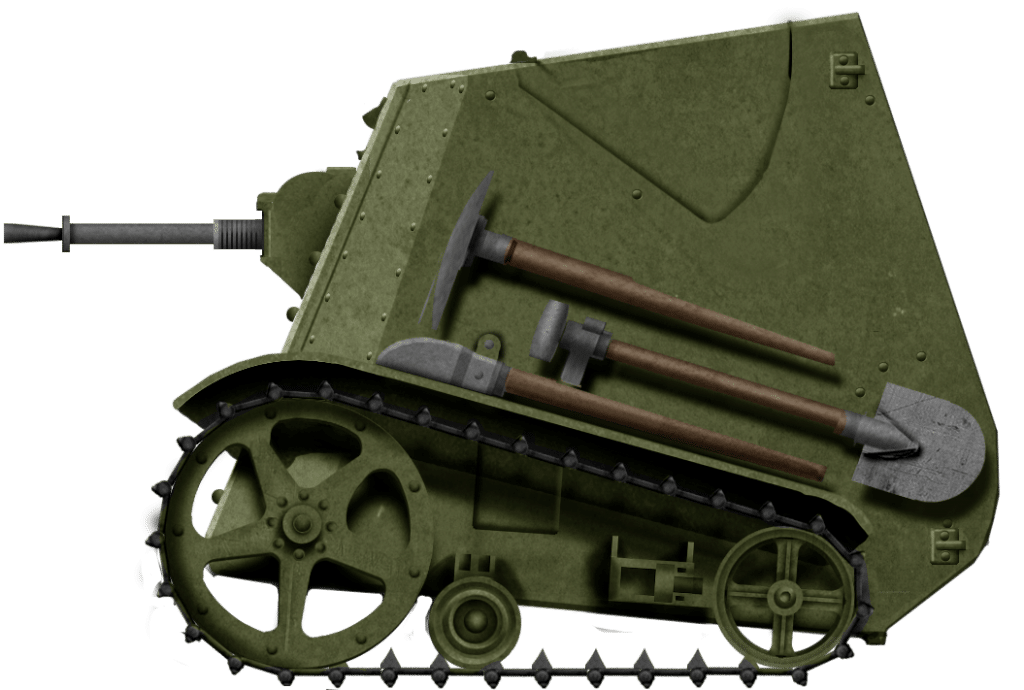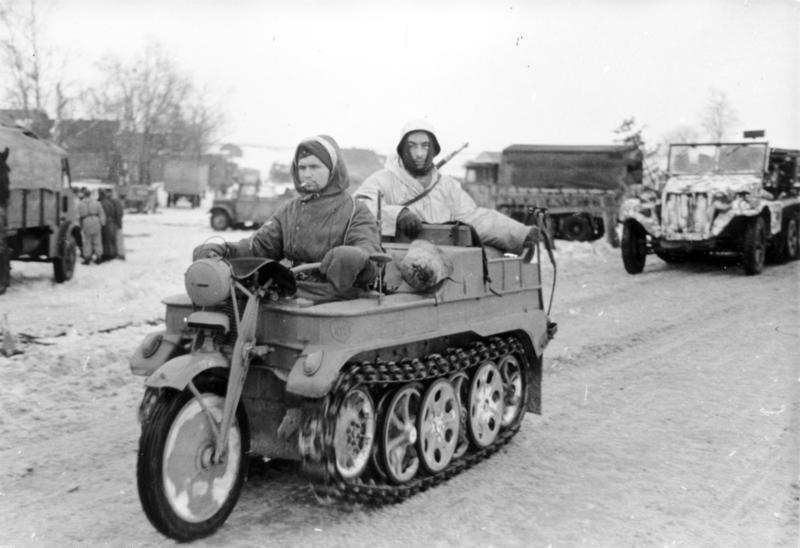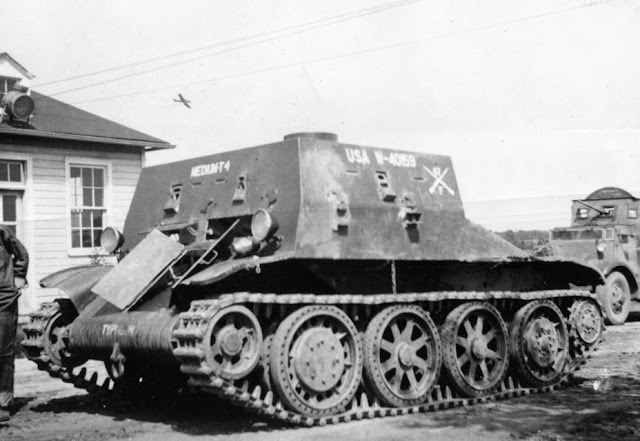1) OTL Weapon #1: The Mias/Moras Tank was a Italian mobile shield/Infantry support weapon invented in 1935 with the concept of supporting advancing infantry.
- It had enough frontal armor to protect it from small arms and heavy machine gun fire.
- It could be armed with either two 6.5mm machine guns or a 45mm mortar that a 5 round autoloader/magazine.
- It could be crewed by one person.
- Unfortunately the motorcycle engine it used was under powered and there wasn't a seat for the operator, meaning you had to walk at a slow pace while using it, making you a sitting duck. It couldn't be used effectively in rough or heavy forested terrain either.
The Ansaldo MIAS and MORAS were two motorized mobile shields designed with the lessons of the First World War in mind.

tanks-encyclopedia.com
2) OTL Weapon #2: The Sd. Kfz. 2 aka "Kettenkrad was a German half-track motorcycle invented in 1939 for the use as a military utility tractor.
- Only needed a single operator.
- The front motorcycle wheel was optional, and could be steered just with the tracks.
- Top speed of 44mph and could pull some pretty heavy loads.
- Was only 3 feet wide, 4 feet tall, and about 8 feet long if you take off the motorcycle wheel, making it pretty small.
- Did relatively well in rough terrain.

en.wikipedia.org
3) ATL Weapon Design Idea: Let's say in 1943, the Italian Social Republic (German backed North Italian puppet state) decides to build itself a light, small, fast, and 1/2 man operated infantry support weapon in urban/mountainous environments by combining the Kettenkrad with Mias/Moras with some additional upgrades? If this were to happen, what design features would you guys suggest?



